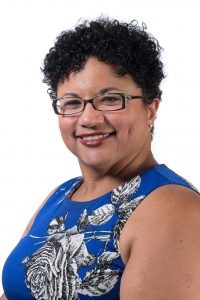 “Don’t they know we’re [American Indians] still alive?” As an adult, I’ve grappled with this question many times. More often than not, I’m ashamed to admit, I’ve gritted my teeth and looked the other way. However, it is not so easy to deflect this question when asked by my own child, an eight-year old American Indian attending a predominantly White school.
“Don’t they know we’re [American Indians] still alive?” As an adult, I’ve grappled with this question many times. More often than not, I’m ashamed to admit, I’ve gritted my teeth and looked the other way. However, it is not so easy to deflect this question when asked by my own child, an eight-year old American Indian attending a predominantly White school.
Unfortunately, this question is not unusual. Across this nation, educators routinely fail to acknowledge the existence of American Indian peoples, instead relegating us to the frontiers of the Wild West and leading students to believe we no longer exist. As a result, many are not aware of the more than 600 different state and federally recognized tribes that exist today, each with their own culture, and many with their own languages still intact. Failure to acknowledge the modern-day existence of American Indians makes it easy for non-Natives to adopt and promote stereotypical images of American Indians. If these misconceptions and stereotypes are to be dismantled, it is imperative that educators become more knowledgeable of American Indians, our cultures, our languages, and the issues and concerns we encounter today, including a politically contentious nation-to-nation relationship with the U.S. government, the forced taking of sacred lands, high rates of poverty, and low-levels of educational attainment, just to name a few. It is equally important to acknowledge how resilient we are, as evidenced by the fact that we persist in spite of more than 500 years of sustained attempts to acculturate and assimilate our peoples. We are doctors, lawyers, teachers, clergy, mothers, fathers, aunties, uncles, athletes, astronauts, chefs, authors, actors/actresses, professors, dancers, artists, and more….. We want these images and stories to be shared in classrooms and schools across this nation. We want the truth to be honored and taught, no matter how difficult it may be to do.
To ensure more complete narratives are presented and to foster more culturally affirming and relevant educational experiences for both Native and non-Native students, educators must work to:
- Identify and select culturally relevant literature;
- Acknowledge and Affirm Students’ Individual and Collective Experiences;
- Engage Parents and Families Within and Outside of the Classroom;
- Demonstrate an Ethic of Care for All Students;
- Increase the Number of American Indian Teachers and Administrators in Schools;
- Make Curricula Relevant to Students; and
- Identify and select culturally relevant literature;
- Make American Indian-focused Teaching Materials more Accessible to Teachers.
Improving educational conditions, and subsequent life outcomes, for American Indian students requires that we, as educators, be willing to interrogate our own beliefs and practices and to commit to ensuring schools are places in which our students’ histories and cultures are accurately reflected and represented. Failure to do so will result in future generations of students being negatively impacted by educational systems and structures that fail to address American Indian cultures, languages, histories, and traditions and that serve to marginalize, silence, and make invisible this nation’s first peoples. Our children deserve nothing less.
An enrolled member of the Coharie Tribe, Susan C. Faircloth, Ph.D., is professor and director of the School of Education at Colorado State University. View Dr. Faircloth’s blog, We Need American Indian and Alaska Native Educators, here.
